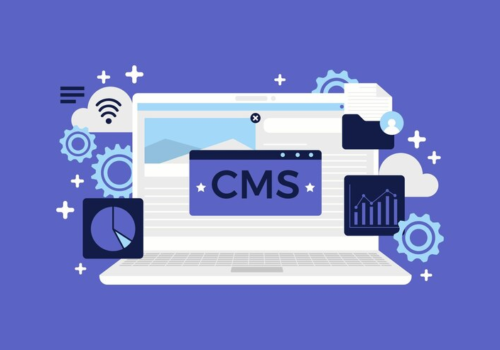Adobe Portfolio Versus WordPress: A Detailed Comparison
Choosing the right platform to showcase your portfolio online can be a critical decision for creatives and businesses alike. This article delves into a comprehensive comparison between Adobe Portfolio (AP) and WordPress (WP), two leading solutions in the digital portfolio domain.
We will examine their features, ease of use, customization capabilities, and more, to help you determine which platform aligns best with your specific needs.
Adobe Portfolio
AP, integrated with Adobe Creative Cloud, offers a straightforward solution for building visually appealing websites. Ideal for artists and photographers, it emphasizes ease of use and aesthetic presentation without requiring coding skills. Users can choose from various themes, editing and personalizing them to reflect their unique brand identity.
However, AP’s simplicity comes with limitations:
- Customization: While user-friendly, AP’s customization options are somewhat restricted, limiting your ability to create a highly unique online presence;
- E-Commerce Capabilities: Direct sales of products or services through AP sites are not supported, posing a challenge for users seeking to monetize their work directly;
- Search Engine Optimization (SEO): AP offers basic SEO features, but it may fall short for users aiming for advanced search engine visibility.
WordPress
In contrast, WP is a versatile Content Management System (CMS), powering a significant portion of the web. Its open-source nature and extensive community support make it a robust choice for a wide range of website types, including portfolios. Key aspects include:
- Customization: WP excels in customization, offering thousands of themes and plugins. Users can extensively tailor their sites, though this may require more technical skill or resources;
- E-Commerce Integration: WP supports comprehensive e-commerce solutions, allowing for direct product sales and service offerings;
- SEO Capabilities: WP is known for its strong SEO features, providing better visibility and ranking on search engines;
- Learning Curve: While WP is user-friendly, its extensive functionality can be overwhelming for beginners. Setting up hosting and domain requires some technical know-how.
Key Differences in Design and Control
- AP: Offers aesthetically pleasing themes suited for quick portfolio setup. Customization is limited, making it less ideal for highly bespoke sites;
- WP: Provides extensive design options and full control over site customization, including access to custom coding, making it suitable for unique and intricate designs.
Gallery Management
- AP: Simplifies showcasing work with user-friendly galleries and direct import features from Adobe Lightroom;
- WP: Offers a robust media library for image organization but requires more steps to display work as elegantly as AP.
Ease of Use
- AP: Wins in simplicity and ease of use, ideal for those with minimal technical skills;
- WP: While powerful, it poses a steeper learning curve, especially in initial setup and customization.
Updates and Maintenance
- AP: Automatically syncs with Adobe Lightroom, updating portfolios with minimal user intervention;
- WP: Demands manual updates for portfolios, though plugins are available to streamline this process.
Shop Integration
Adobe Portfolio
AP’s capabilities do not extend to e-commerce functionalities. This limits its usefulness for those looking to monetize their online presence directly through their portfolio. Users can only redirect visitors to an external e-commerce platform, which might not seamlessly integrate with their portfolio’s design and user experience.
WordPress
WP, in contrast, is highly accommodating to e-commerce needs. Thanks to its compatibility with plugins like WooCommerce, users can effortlessly incorporate an online storefront into their website. This integration allows for a streamlined experience where visitors can view and purchase products or services directly. Key features include:
- Easy Integration: WooCommerce and similar plugins can be seamlessly integrated into any WP site;
- Customization: The store’s look and feel can be customized to match the website’s aesthetic;
- Product Management: Efficient management of inventory, pricing, and sales.
SEO
AP
AP provides basic SEO tools, allowing for the optimization of meta titles, descriptions, and image alt tags. However, these options are relatively limited, potentially hindering the website’s visibility on search engines. This may not suffice for those aiming to significantly boost their online reach through organic search traffic.
WP
WP, on the other hand, is designed with SEO in mind. Its extensive range of SEO plugins, such as Yoast SEO, offers robust tools to enhance website visibility. These plugins help in:
- Advanced Optimization: Offering detailed insights and suggestions for content optimization;
- Customization: Tailoring SEO strategies to specific pages or posts;
- Monitoring: Tracking website performance on search engines.
Cost
AP
AP is included in the Adobe Creative Cloud subscription. For non-subscribers, the cost is $14.99/month. This makes AP a viable option for existing Adobe Creative Cloud users, but potentially costly for others.
WP
WP is free and open-source but requires separate hosting and domain expenses. Despite these costs, setting up a WP website often proves to be more economical than AP, especially considering the flexibility and additional features WP offers.
Pros and Cons
AP
Pros:
- Intuitive interface requiring no coding;
- Syncs with Adobe Lightroom;
- Inclusive in Adobe Creative Cloud subscription.
Cons:
- No e-commerce capabilities;
- Limited SEO control;
- Additional cost for non-subscribers;
- Lacks features like blogging.
WP
Pros:
- Wide range of free tools and plugins;
- E-commerce capabilities with WooCommerce;
- Extensive SEO control;
- Option to add blogs or articles.
Cons:
- Manual image management required;
- Additional costs for hosting and domain;
- Requires technical skills for customization;
- Time-consuming setup and maintenance.
Community and Support
Both AP and WP have unique community and support aspects that are important for users:
AP Community and Support:
- Limited Community Support: Being a niche product, AP has a smaller user community;
- Direct Support: As part of Adobe’s suite, AP users have access to professional support from Adobe;
- Learning Resources: Adobe provides various tutorials and guides, though they are more limited in scope.
WP Community and Support:
- Extensive Community: WP has a vast global community offering forums, tutorials, and meetups;
- Plugin Developer Support: For specific plugins, support is often available directly from developers;
- Diverse Learning Resources: A wealth of information is available online, including tutorials, blogs, and courses.
Flexibility and Scalability
When considering the long-term potential of a website, flexibility and scalability become crucial. Here’s how AP and WP stand in these aspects:
AP is tailored for creatives looking to showcase their work, but its scope for scaling up is limited. It’s more suited for portfolios that require minimal updates and less complex functionalities. On the other hand, WP offers extensive flexibility and scalability. Users can start with a basic portfolio and expand to a full-fledged e-commerce site or a content-rich blog. Its plugin architecture allows for almost limitless expansion, adapting to growing business needs and changing market trends.
For those considering broader content management systems, comparing WP with other platforms like HubSpot CMS can offer further insights. HubSpot CMS provides different features and functionalities, making it a contender for businesses seeking integrated marketing solutions.
Conclusion
In summarizing the comparison between AP and WP, it’s clear that each platform caters to distinct needs and preferences. AP shines in its simplicity and integration with Adobe Lightroom, making it a solid choice for Adobe Creative Cloud subscribers who require a straightforward portfolio. However, its limitations in e-commerce, SEO, and scalability might deter users seeking a more robust online presence.
Conversely, WP stands out for its flexibility, extensive customization options, and e-commerce capabilities. It’s an ideal platform for users who are ready to invest more time and effort into building and maintaining a dynamic, SEO-friendly website with potential for growth and monetization. While there are additional costs associated with hosting and domain, the long-term benefits and versatility of WP often outweigh these expenses.
Ultimately, the decision between AP and WP hinges on the user’s specific needs, technical proficiency, and long-term goals. By carefully considering each platform’s features, benefits, and limitations, users can make an informed choice that best suits their portfolio and business objectives.





